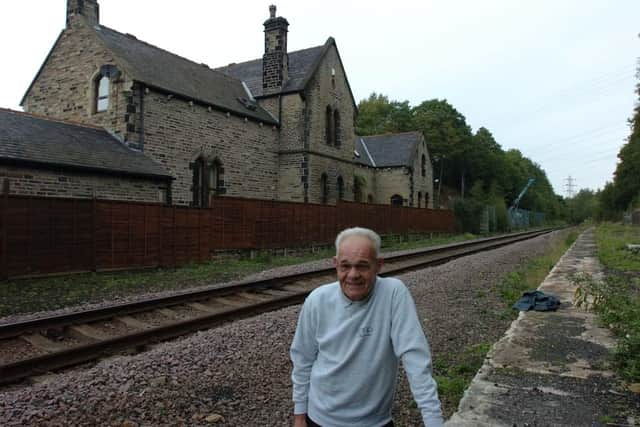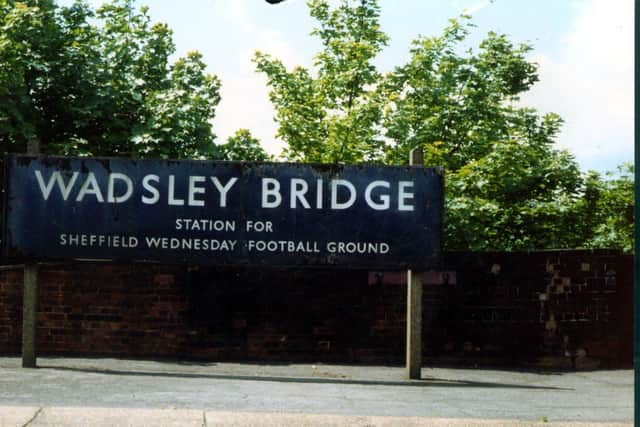Don Valley Line: Where was railway between Sheffield and Stocksbridge that closed in 1970 - and how feasible is it that it could re-open?
The proposal was shortlisted for Restoring your Railways funding two years ago, and Sunak appeared to suggest today that it would be in prime position to be granted approval.
The plan to restore passenger services to a line that has been freight-only since 1970 has been mooted for around 20 years, and at one stage there were even plans to run heritage trains to and from Sheffield along the route. Unlike many other ‘reverse Beeching’-type schemes, the single track remains intact, though several original stations along the Don Valley have been lost.
Advertisement
Hide AdAdvertisement
Hide AdWhere is the Don Valley Line and why did it close to passengers?


It was a section of the Woodhead Line, which was a major Beeching-era casualty and ran between Sheffield and Manchester, via Penistone. This part of the route ran between Sheffield and Deepcar, via Oughty Bridge, Wadsley Bridge and Neepsend. The terminus in the city was the now-closed Sheffield Victoria Station.
There was always a spur serving the steelworks at Stocksbridge – after which the line onwards to Barnsley has been lifted – and this remains in use for freight trains, which can only travel back and forth to Woodburn Junction, where they can join the Sheffield to Lincoln line.
Passenger services were withdrawn in 1970, in part because the Woodhead Line was seen as a duplicate route across the Peak District and the Hope Valley Line was saved instead. Freight continued until 1981, when the route and its famous Pennine tunnels were mothballed due to a decline in coal traffic.
What happened to the stations on the Don Valley Line?


Advertisement
Hide AdAdvertisement
Hide AdDeepcar closed in 1959, and the station building is now a house. The private line to the Samuel Fox and Company steelworks ran from here, and up until the 1930s there were even passenger services to the factory.
Oughtby Bridge, serving Oughtibridge, shut the same year and the Grade II-listed building was used for industry until conversion into a home in 2008.
Although Wadsley Bridge also closed to passenger trains in 1959, it has a more interesting footnote. Summer specials occasionally used the platforms for excursions through the 1960s, and in 1979, British Rail took the almost unprecedented step of temporarily opening it, along with Dronfield Station and the closed Midland platforms at Dore, because heavy snowfall had made roads in Sheffield impassable. The trains on the Sheffield to Huddersfield service called there for a week. Until 1994, football special trains bound for Hillsborough Stadium also made stops at Wadsley Bridge before it was completely mothballed in 1997. The buildings have since been demolished, and the platforms, though in poor condition, remain.
Neepsend, which today would be convenient for the trendy Kelham Island district, shut as early as 1940 because of competition from trams. The buildings and site were cleared in the 1970s.


Advertisement
Hide AdAdvertisement
Hide AdThe Sheffield Victoria terminus was axed by Beeching as its trains could easily be rerouted to the other main stations in Sheffield. Though it shut in 1970, the platform foundations are still present and the trackbed has been protected for a possible Supertram extension.
What route would a reinstated Don Valley Line take?
It would essentially be a shuttle service to and from the city, as the line is now only single track. A terminus at Nunnery Square has been suggested, which would allow it to link to the Supertram network.
In 2003, Stocksbridge resident David Goodison first proposed using the line as a heritage railway, and Sheffield City Council supported the idea of re-opening it for commuter services. A survey found that the section between Deepcar and Victoria was in good condition and suitable for a diesel shuttle. The old station sites at both locations could have ‘modest’ reinstated station services.


However, the not-for-profit company Don Valley Railway did not propose opening any intermediate stations, favouring a non-stop shuttle between Stocksbridge or Deepcar and a station in central Sheffield. The service would be half-hourly and a journey taking only 11 minutes.
Advertisement
Hide AdAdvertisement
Hide AdThere was consideration given to extending the track westwards to Penistone, Oxspring and Thurgoland, beyond Stocksbridge. New stations were mooted for Wharncliffe Side, Hillsborough/Owlerton to serve the Sheffield College campus, the now-closed Ski Village, Nunnery Squrare in Sheffield and the Lower Don Valley, to link with Supertram.
There were even ambitious suggestions that services could then continue to Darnall, Woodhouse, Orgreave and the Advanced Manufacturing Park.
The original heritage railway plans involved doubling the track and running steam trains to and from a living museum about the history of steelmaking.
What are the benefits of re-opening the Don Valley Line?
Stocksbridge is only 10 miles from Sheffield city centre, but bus journeys can take up to an hour. A rail link would significantly improve connectivity.
